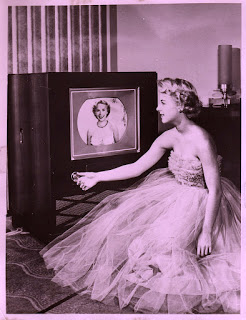 Found in an old LIFE magazine from March 3 1961 this computer story:
Found in an old LIFE magazine from March 3 1961 this computer story:
In Glendale California a certain computer even thinks it is a beatnik poet. Having been taught a few rules of grammar and given a vocabulary of 500 words of the type that beatnik poets frequently employ, this robot has clanked out works such as the following:
Auto beatnik poem number 41: Insects
“All children are small and crusty,
An iron can saw all dragons,
All pale, blind, humble waters are cleaning,
A insect, dumb and torrid (torpid) comes off the Daddy-o,
How is a insect into this fur?”
Some auto beatnik poems were read by a bearded scientist to unsuspecting denizens of a Los Angeles coffeehouse who ‘became quite stirred up with admiration.’ One especially appealing line , which the computer likes, is “AH, I AM NOT A MACHINE.” The beatnik computer is not a stunt. Its masters are using it to study how to build better computers that can communicate in the English language.
This story is repeated with the variant word “torpid’ for ‘torrid’, possibly an improvement, in the 1962 book Science Shapes Tomorrow (Phoenix, London). They quote the poem in a chapter asking whether computers can think. They say that if a computer is going to think they must be able to do four main things:
- They must be able to learn by experience.
- They will have to become more flexible. The machine will have to come far closer to our almost miraculous five senses which feed our brains with information – great steps are being made in this direction ..the Perceptron is being taught to recognize letters of the alphabet even if they are sloppily written…
- A the moment most machines work on strictly logical lines -they will have to break free to produce for themselves new and original ways of working with the data inside them.
- The machine must be able to recognize when it is being brilliant. Any machine fed with enough words and grammatical rules, for example can write poetry. It could even write very good poetry – another Shakespeare sonnet, perhaps, but the machine is not a great poet until it can distinguish the perfect sonnet from the drivel. And the same goes for logical thinking- it must be able to recognise which of its logical statements are valuable and which are not, even though all of them are true. It would be sad if a machine, for example, hit on the successor to Einstein’s theory of relativity and then did not recognise that this was a more valuable statement to make than printing out that the earth is round.. the complete answer to mankind problems might find itself crumbled up in the wastepaper basket…












